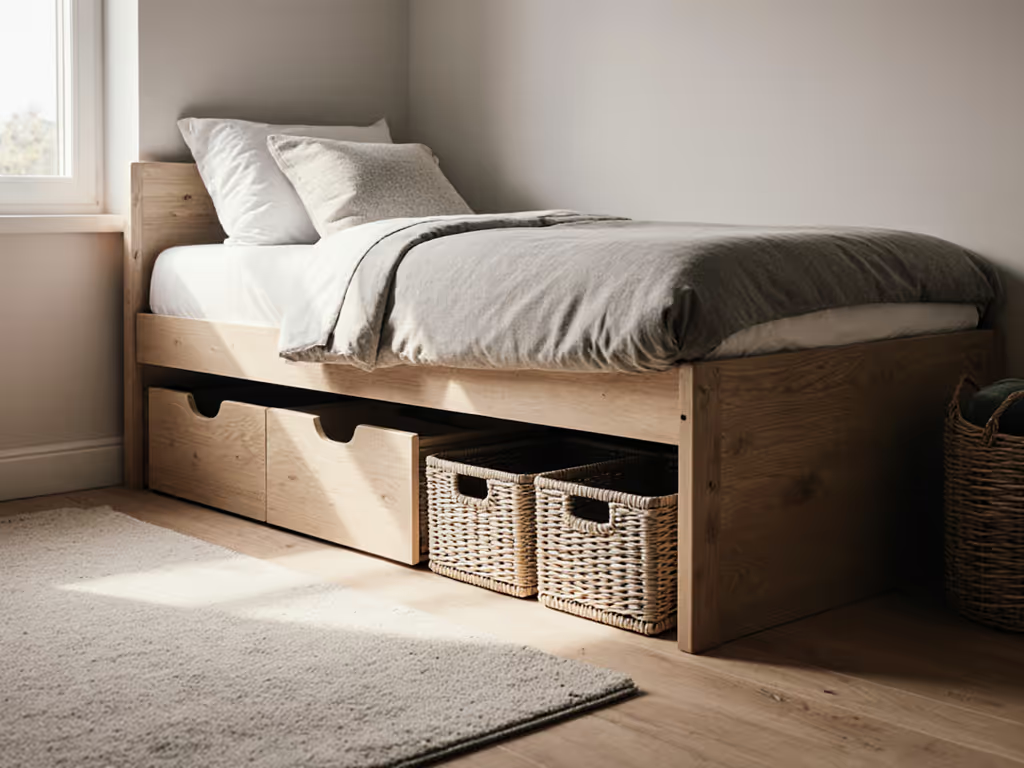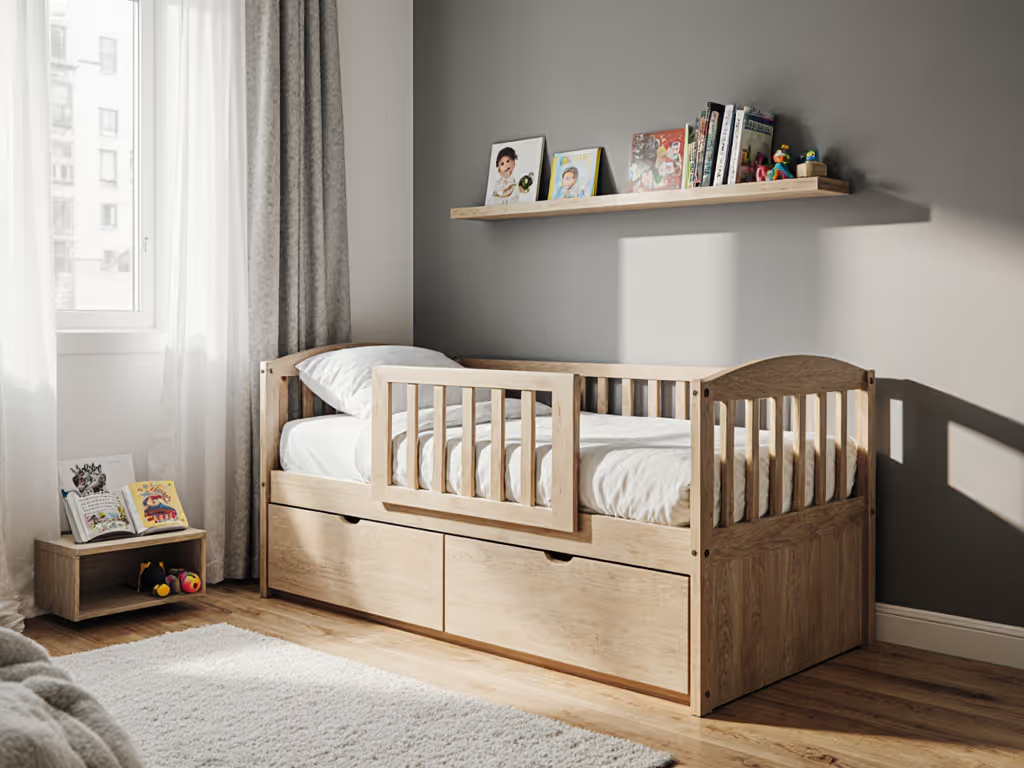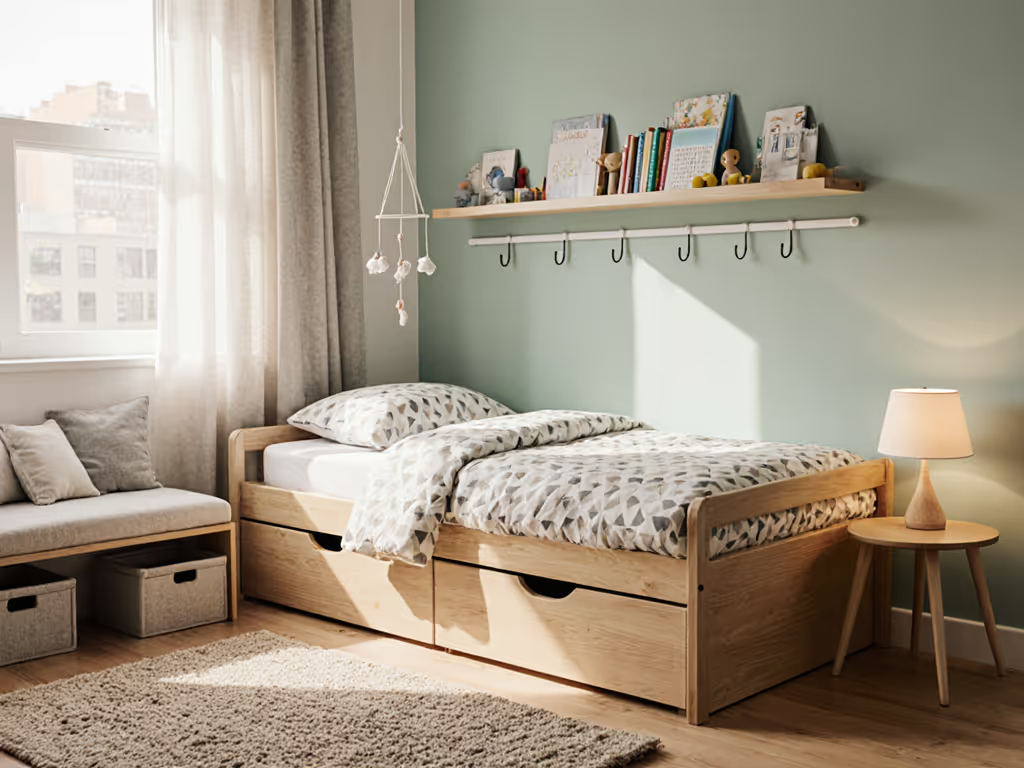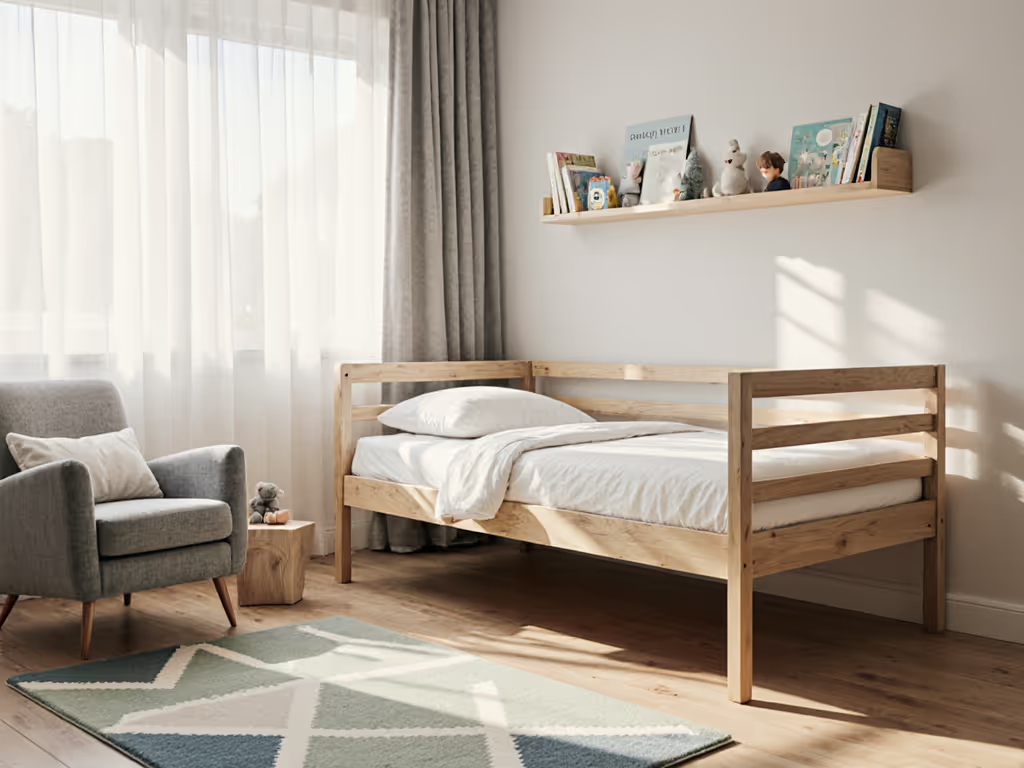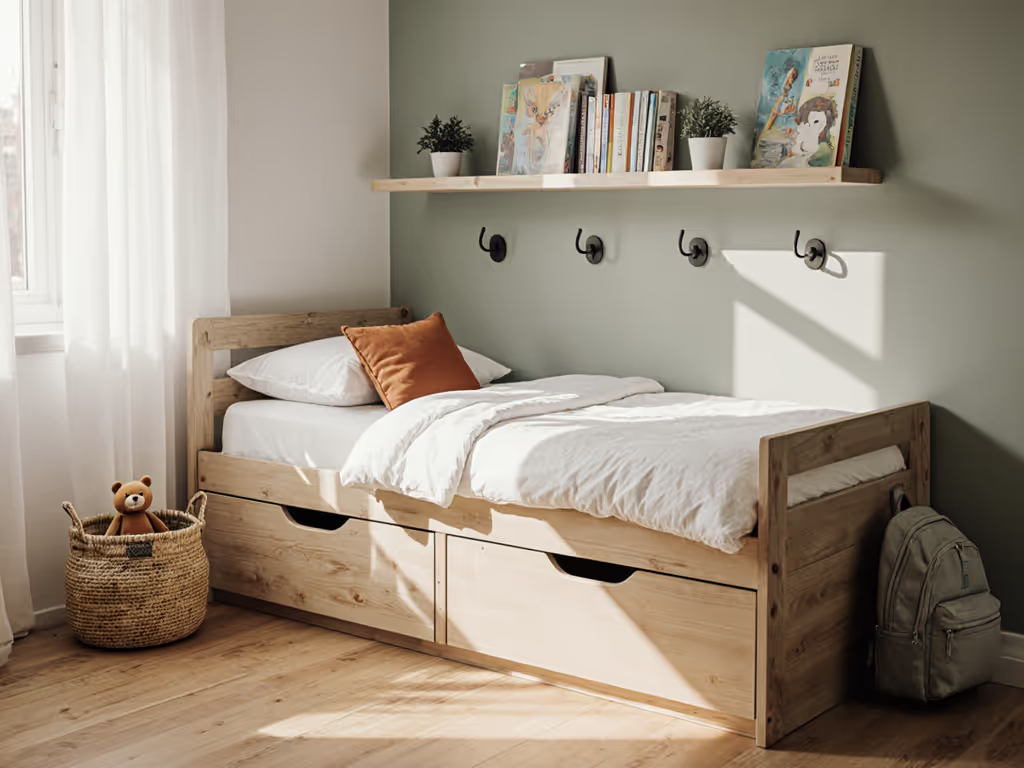
Small Space Toddler Bed Guide: Optimize Your Child’s Room
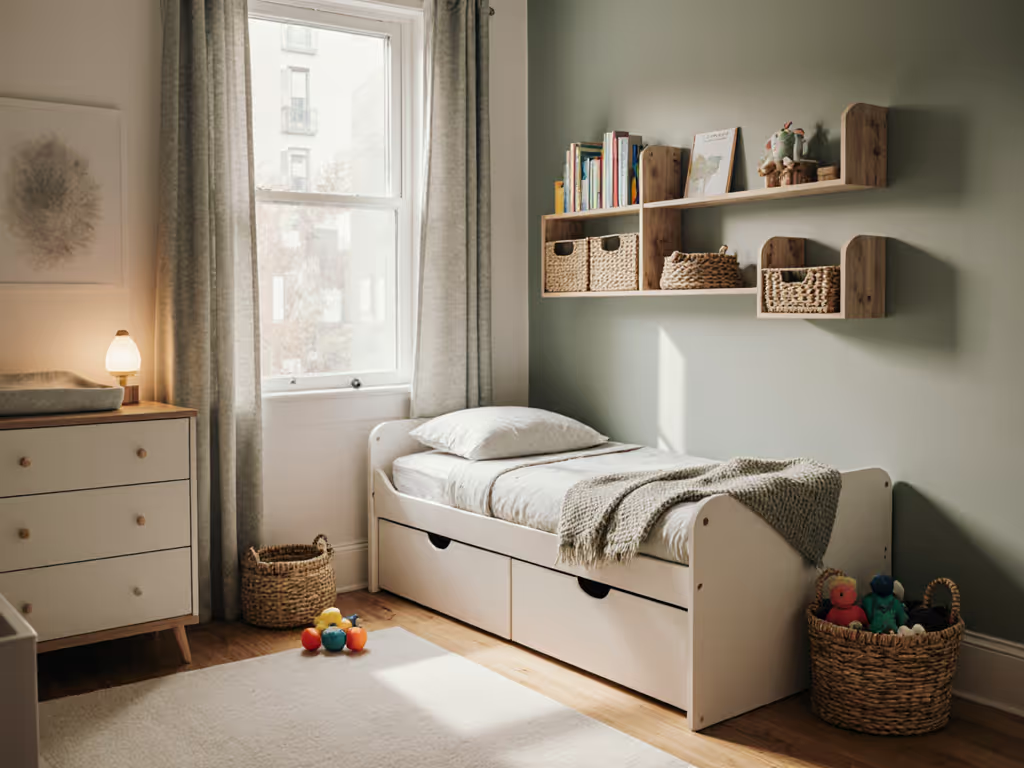
Nearly 40 percent of parents say fitting a toddler bed into a small room is their biggest design challenge. Trying to balance comfort, safety, and play space in a tight area can feel overwhelming when you want your child to have a cozy retreat. Clear tips on measuring your space, picking the best bed style, and checking every detail for safety help make the transition smoother and less stressful for everyone.
Quick Summary
| Key Point | Explanation |
|---|---|
| 1. Assess room layout before bed selection | Measure dimensions and sketch the room to identify adequate bed placement and maintain walking space for safety. |
| 2. Choose a space-saving toddler bed style | Opt for modular, loft, or storage beds to maximize space while ensuring comfort and safety for your child. |
| 3. Prioritize mattress and bed safety features | Ensure the mattress fits snugly, check for non-toxic materials, and inspect for rounded edges to minimize injury risks. |
| 4. Create an inviting sleep environment | Clear clutter around the bed, place comfort items nearby, and utilize soft rugs to enhance safety and comfort during transition. |
| 5. Conduct a thorough safety assessment post-installation | Inspect hardware stability, mattress fit, and bed railing height to ensure the bed meets safety standards for your toddler. |
Step 1: Assess Your Room's Layout and Space Needs
Understanding your room's layout is crucial when selecting the perfect toddler bed for a small space. This step helps you determine the best bed placement and size without overwhelming your child's sleeping area.
Start by grabbing a measuring tape and creating a simple sketch of your room. Measure the total floor space and note any existing furniture like dressers, changing tables, or wardrobes. Pay special attention to wall lengths and potential bed locations. You want to ensure enough walking space around the bed and leave room for play and movement.
Consider the room's unique characteristics. Are there windows that might restrict bed placement? Do you have radiators or heating units that need clearance? Electrical outlets and door swing are also critical factors. A bed blocking an outlet or preventing a door from opening fully can create unnecessary complications.
Pro Tip: Always leave at least 24 inches of walking space around the bed to prevent tripping and allow easy access.
Next, think about room orientation and natural light. A bed positioned near a window can provide morning warmth but might also expose your toddler to direct sunlight. Aim for a placement that offers comfort and protects your child from harsh light or drafts.
Don't forget vertical space. In small rooms, consider loft-style or elevated beds that free up floor area for play or storage. Some compact beds come with built-in storage underneath perfect for maximizing limited square footage.
With your room measurements and layout sketch complete, you are now ready to explore toddler bed options that will seamlessly fit your space.

Step 2: Select a Space-Saving Toddler Bed Style
Choosing the right toddler bed style can transform a cramped room into a functional sleeping sanctuary. Your goal is to find a bed that maximizes space while providing comfort and safety for your growing child.
Inspired by UNICEF's innovative furniture design principles, consider modular bed styles that adapt to changing room configurations. These versatile options allow you to reconfigure your child's sleeping area as their needs evolve. Look for beds with integrated storage solutions like built-in drawers or shelves underneath the sleeping surface.
Compact bed designs come in several smart configurations. Platform beds with low profiles work wonderfully in small rooms. They sit close to the ground reducing visual bulk and creating an open feel. Some models feature pull-out storage compartments perfect for keeping extra bedding or toys neatly tucked away.
Pro Tip: Prioritize beds with locally sourced materials that offer durability and flexibility for growing children.
Loft-style beds represent another excellent space-saving solution. By elevating the sleeping area, you create valuable floor space underneath for a desk, play area, or additional storage. These vertical designs work magic in rooms with limited square footage.
Consider convertible beds that grow with your child. Many modern designs transition from toddler to junior bed configurations without requiring a complete replacement. This approach not only saves space but also provides long-term value for budget-conscious parents.
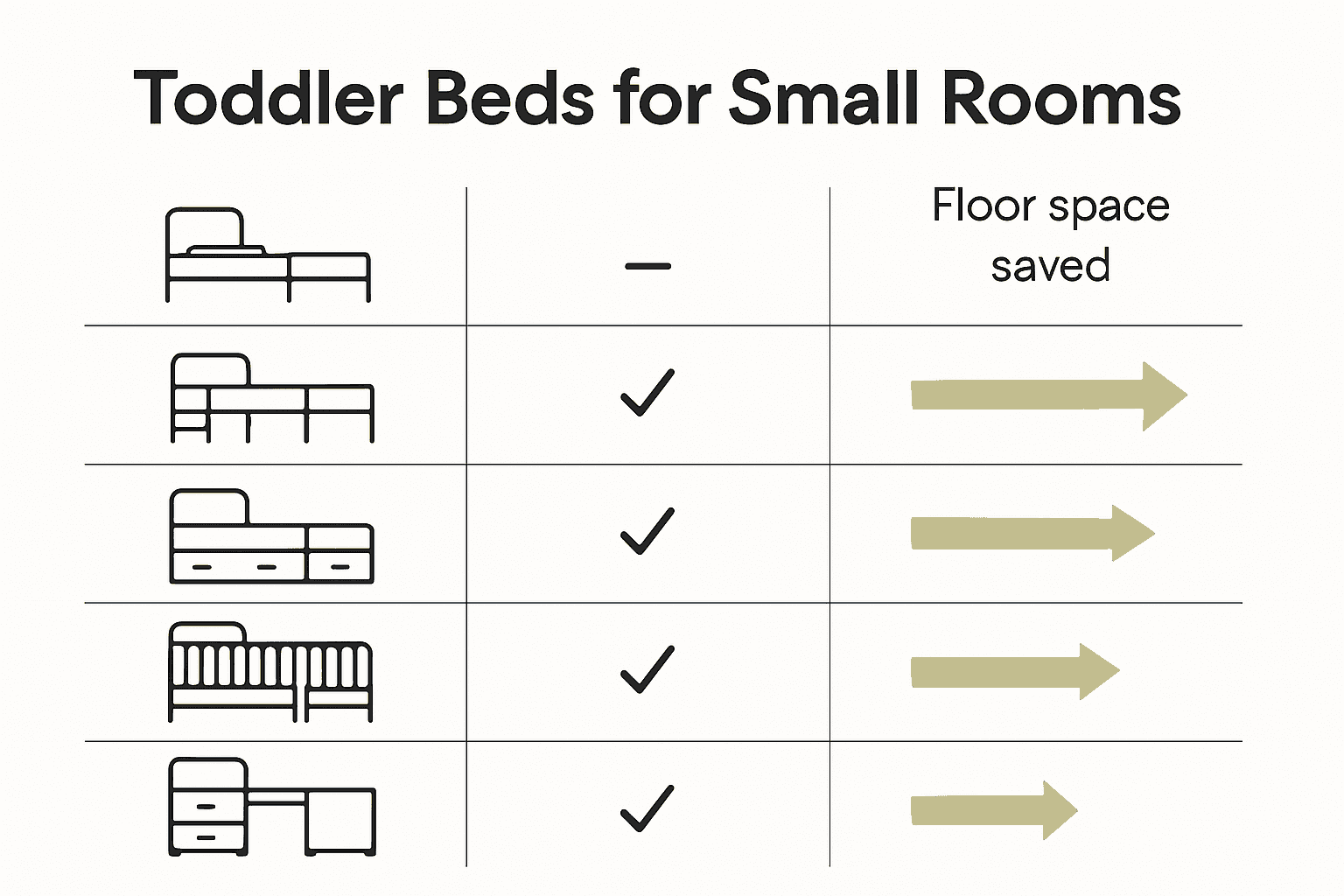
Here's a comparison of popular toddler bed styles for small spaces:
| Bed Style | Space-Saving Features | Pros | Considerations |
|---|---|---|---|
| Platform Bed | Low profile<br>Compact frame | Easy access<br>Open feel | Limited storage |
| Loft-Style Bed | Elevated sleeping area<br>Free floor | Adds storage/play space | Needs ceiling clearance |
| Storage Bed | Built-in drawers<br>Shelves | Maximizes storage | Slightly heavier<br>Costlier |
| Convertible Bed | Transitions as child grows | Long-term value | Larger initial investment |
| Modular Bed | Reconfigurable layouts | Flexible<br>Adaptable | Assembly required |
With your space-saving bed style selected, you are now prepared to focus on ensuring maximum safety and comfort for your little one's new sleeping space.
Step 3: Evaluate Bed Safety Features and Materials
Safety is paramount when selecting a toddler bed. Your mission is to create a secure sleeping environment that protects your child while providing comfort and peace of mind.
According to KidsHealth recommendations, start by ensuring the bed has a firm mattress that fits snugly within the frame. Gaps between the mattress and bed frame can pose serious entrapment risks. Test the mattress fit by pressing around the edges and checking for any potential spaces where small limbs might get caught.
Material selection plays a crucial role in safety. Look for beds constructed from non toxic solid wood or metal with smooth rounded edges. Avoid beds with sharp corners or exposed hardware that could potentially injure your curious toddler. Check that all connection points are securely fastened and do not wobble or feel unstable.
Pro Tip: Perform a monthly safety inspection checking for loose screws loose joints or signs of wear and tear.
The National Institutes of Health emphasize creating a sleep environment free from soft objects. This means removing extra pillows blankets and stuffed animals from the bed. A fitted sheet should be the only bedding accessory allowed to reduce suffocation risks.
Additionally examine the bed railings carefully. They should be sturdy and close enough together to prevent your child from slipping through. Ideally railings should extend at least 5 inches above the mattress surface to provide adequate protection against potential rolling or climbing accidents.
With safety features thoroughly evaluated you are now ready to transform this sleeping space into a secure and comfortable sanctuary for your little one.
Step 4: Prepare the Room and Install the Bed
Transitioning your toddler to a new bed is an exciting milestone that requires careful preparation. Your goal is to create an inviting sleep space that feels safe and comfortable for your little one.
Drawing from expert recommendations on child development environments, start by clearing the room of potential obstacles. According to Virtual Lab School guidelines, creating defined spaces helps support your toddler's social and emotional growth. Remove any unnecessary furniture or items that might clutter the walking paths around the new bed.
Begin the installation process by identifying the optimal bed location. Aim to position the bed away from windows electrical outlets and potential drafts. Ensure the bed is placed against a stable wall with enough surrounding space for your child to move around safely. The responsive classroom approach emphasizes creating environments that support independence and ease of movement.
Pro Tip: Place a soft rug beside the bed to create a comfortable landing zone and reduce the risk of hard floor impacts.
Carefully unpack the bed and follow the manufacturer's assembly instructions precisely. Take your time to ensure each connection is secure and all hardware is correctly installed. Test the stability of the bed by gently applying pressure to different areas and checking for any wobbling or loose components.
Once the bed is installed, create a welcoming atmosphere. Add a favorite stuffed animal or a soft blanket to help your toddler feel comfortable in their new sleeping space. Consider placing a small nightlight nearby to provide a sense of security during nighttime.
With the bed successfully installed you are now ready to help your toddler transition to their new sleeping environment.
Step 5: Test the Bed Setup for Safety and Comfort
After installing the toddler bed, a thorough safety and comfort assessment is crucial to ensure your child's sleeping environment is truly secure. This final verification step will help you confirm every detail of the bed setup meets the highest safety standards.
Following KidsHealth recommendations, start with a comprehensive hardware inspection. Gently wiggle each bed rail and connection point to confirm absolute stability. Press firmly against joints and corners to verify there is no unexpected movement or looseness that could compromise the bed's structural integrity.
Check the mattress fit meticulously. According to safe sleep guidelines, the mattress should fit snugly within the bed frame with no more than two fingers width of space between the mattress edge and bed frame. Any larger gap could pose an entrapment risk for your curious toddler.
Pro Tip: Perform a "squeeze test" by pressing around the mattress edges to identify any potential pinch points or areas of concern.
Create a minimalist sleep environment by removing all unnecessary soft items. The National Institutes of Health emphasize keeping the sleeping area completely clear of pillows blankets and stuffed animals. A fitted sheet should be the only bedding accessory to reduce suffocation risks.
Simulate your toddler's movements by gently testing the bed railings. Confirm they are high enough to prevent accidental rolling and sturdy enough to withstand potential climbing attempts. Ideally railings should extend at least 5 inches above the mattress surface and feel completely immovable when pressure is applied.
With your thorough safety assessment complete you are now prepared to introduce your toddler to their new sleeping space with confidence and peace of mind.
Find the Perfect Toddler Bed for Your Small Space Today
Struggling to create a safe and cozy sleeping area in a small room can feel overwhelming for any parent. This guide highlights key challenges such as maximizing floor space, choosing the right bed style like loft or platform beds, and ensuring top-notch safety features. Your goal is to provide your child with comfort and security without crowding their play environment or sacrificing functionality.
At City Toddler Beds, we understand the importance of smart, space-saving solutions tailored for growing toddlers. Discover expert advice on selecting beds crafted from durable, non-toxic materials designed to grow with your child while optimizing limited room layouts. Whether you want to explore convertible beds or learn more about safe mattress fits, City Toddler Beds offers trusted insights to help you confidently choose the best fit.
Take control of your child’s sleep space now and transform small room challenges into opportunities for calm and comfort. Visit City Toddler Beds to start finding the ideal toddler bed that matches your needs and ensures a restful night’s sleep for your little one.
Frequently Asked Questions
How can I effectively measure my child's room for a toddler bed?
To measure your child's room effectively, use a measuring tape to determine the total floor space and note existing furniture. Create a simple sketch to visualize where the bed can fit without overwhelming the area, ensuring at least 24 inches of walking space around the bed.
What are the top space-saving styles for toddler beds?
The top space-saving styles for toddler beds include platform beds, loft-style beds, storage beds, convertible beds, and modular beds. Choose a style that maximizes your child's room while providing necessary features like storage or adaptability as your child grows.
What safety features should I look for in a toddler bed?
Key safety features to look for include a firm mattress that fits snugly, sturdy railings that are at least 5 inches above the mattress, and materials free of toxic substances. Prioritize beds with smooth edges and secure hardware to minimize injury risks for your toddler.
How do I prepare the room before installing the new toddler bed?
Clear out unnecessary furniture and obstacles from the room to create a safe environment. Position the bed away from windows and outlets, and ensure there's enough space around it for your child to move freely, ensuring their new sleeping area feels welcoming and safe.
What should I check after installing the toddler bed to ensure safety and comfort?
After installation, check the bed's stability and the snug fit of the mattress within the frame. Remove any soft items like pillows or stuffed animals, leaving only a fitted sheet to lower suffocation risks, and test the bed railings to confirm they adequately prevent rolling accidents.


